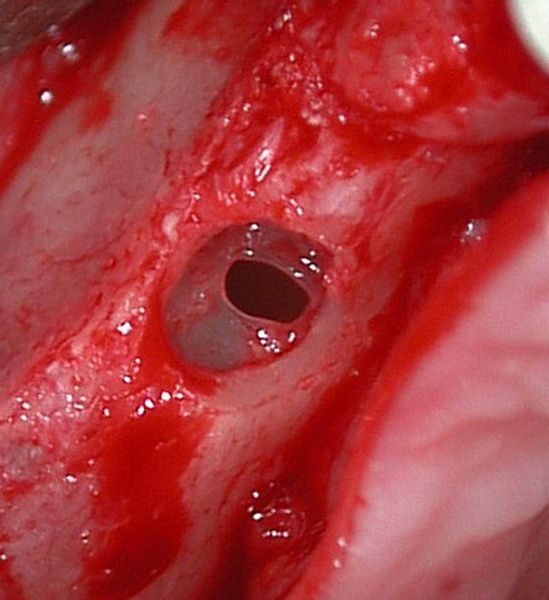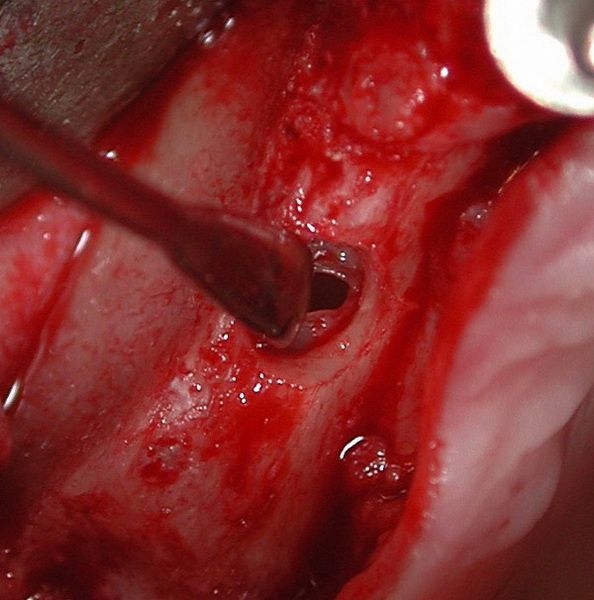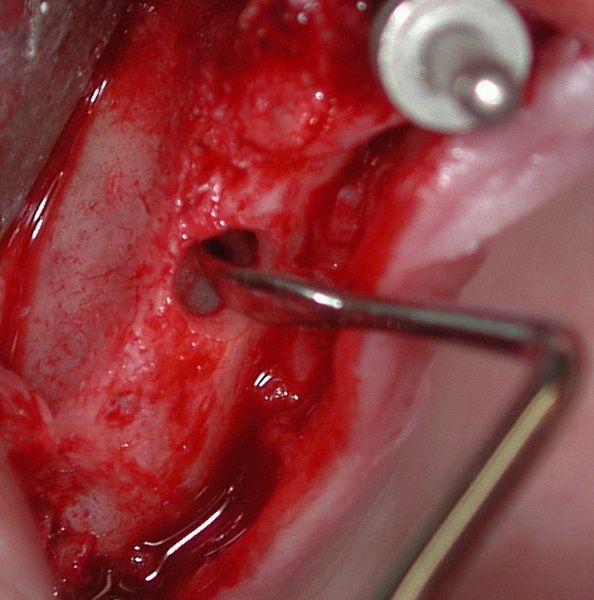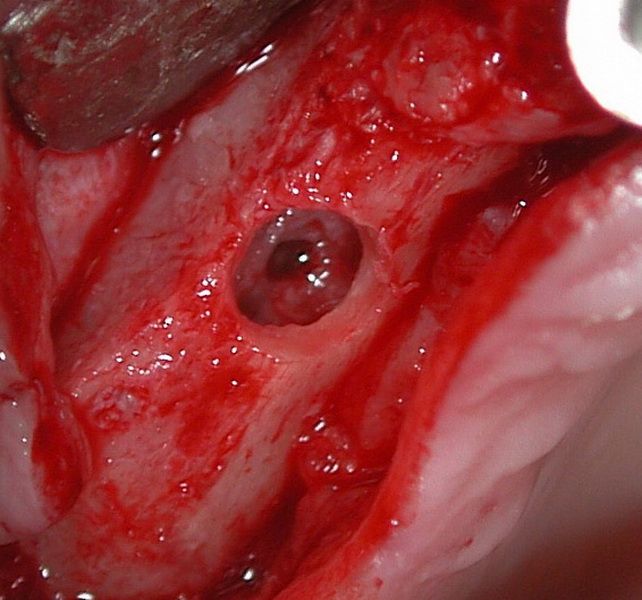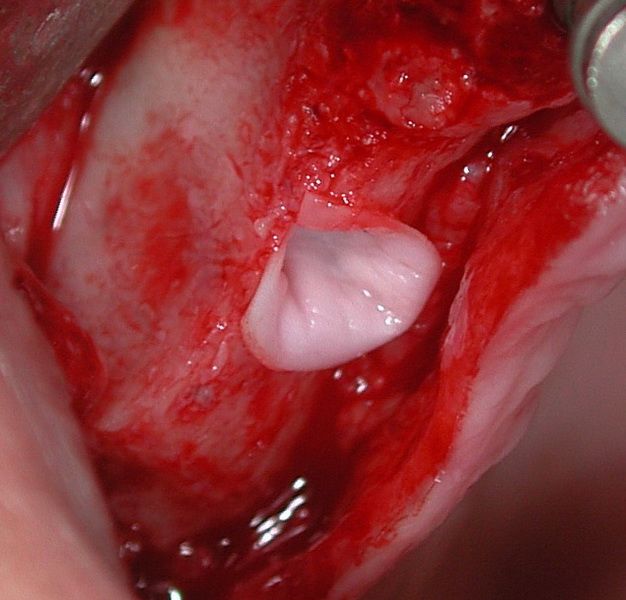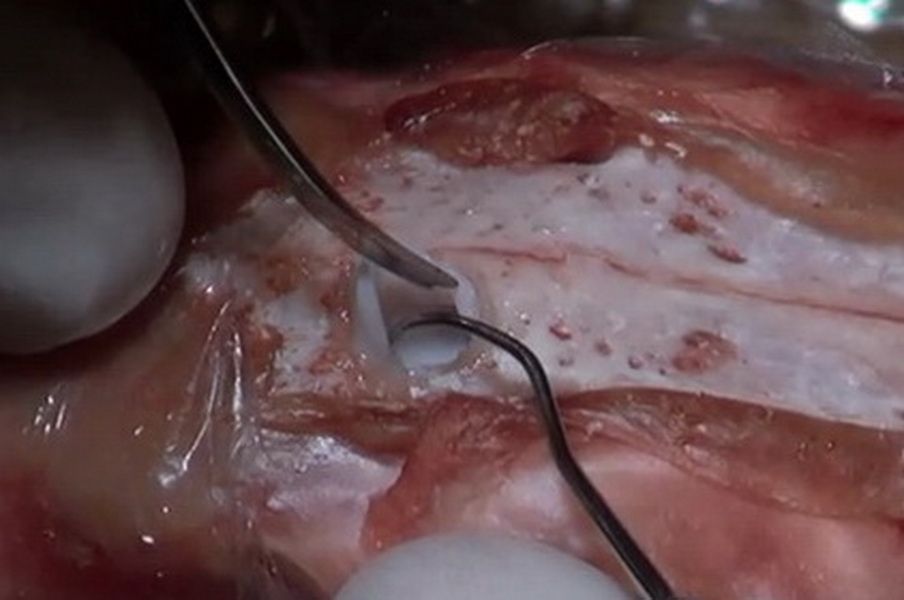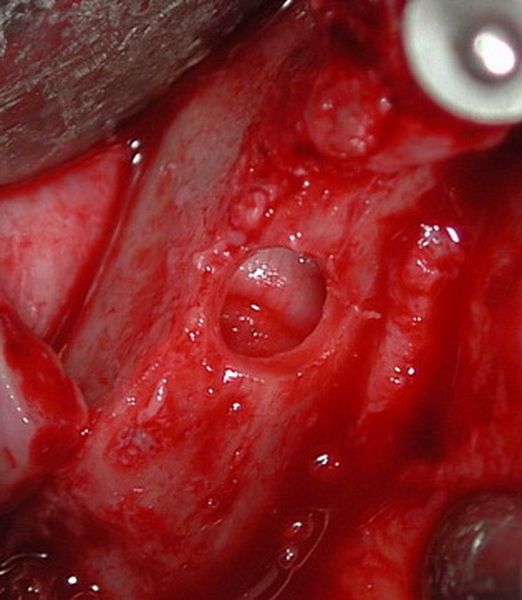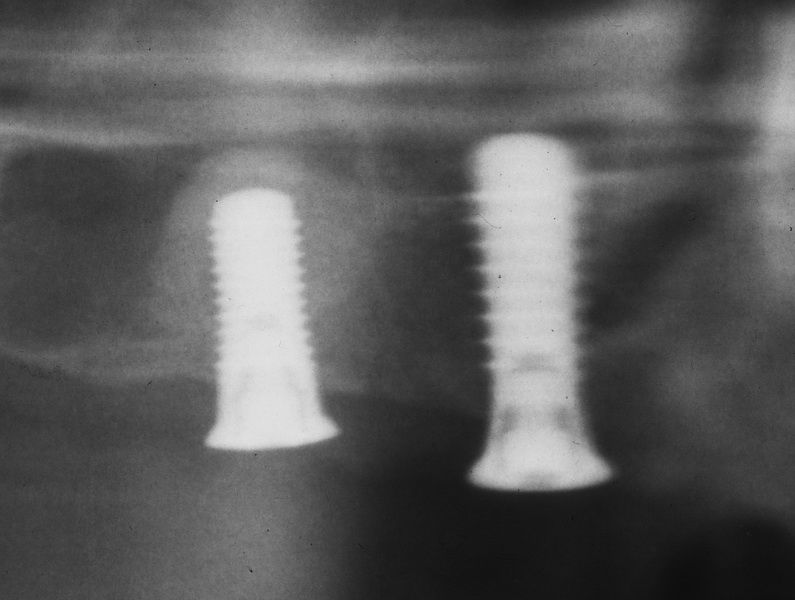Managing a perforation of the Schneider's membrane
The incidence of mucosa perforation was 15.3% in the study cases (see below). In the premolar region it is much higher than in the molar region, probably due to the sloping sinus floor and the steep buccal and palatal walls.
Overall, I estimate the incidence for a perforation to be about 12%.
The rupture was able to be covered with a collagen membrane (BioGide) in every case and the sinus lift/implantation completed in one sitting.
The loss rate was not significantly increased due to the perforations.
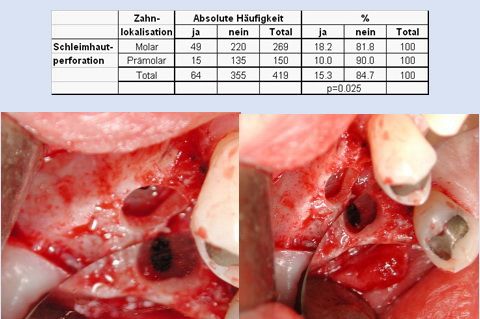
The nose blowing test has to be performed often so that the rupture can be recognized promptly and kept small.
In the nose blowing test a person has to inhale and exhale with a closed nose in order not to produce a false negative result.
The site of the rupture is located. It can be seen or the escaping air outlet indicates the location.
The Meissner's membrane is temporarily elevated opposite the site of the rupture and then further elevated around the site of the rupture coming from the periphery.
This succeeds in getting the perforation into the center and it gets smaller.
The perforation is covered with a collagen membrane (BioGide), bone substitute (BioOss) introduced and the implant inserted.


